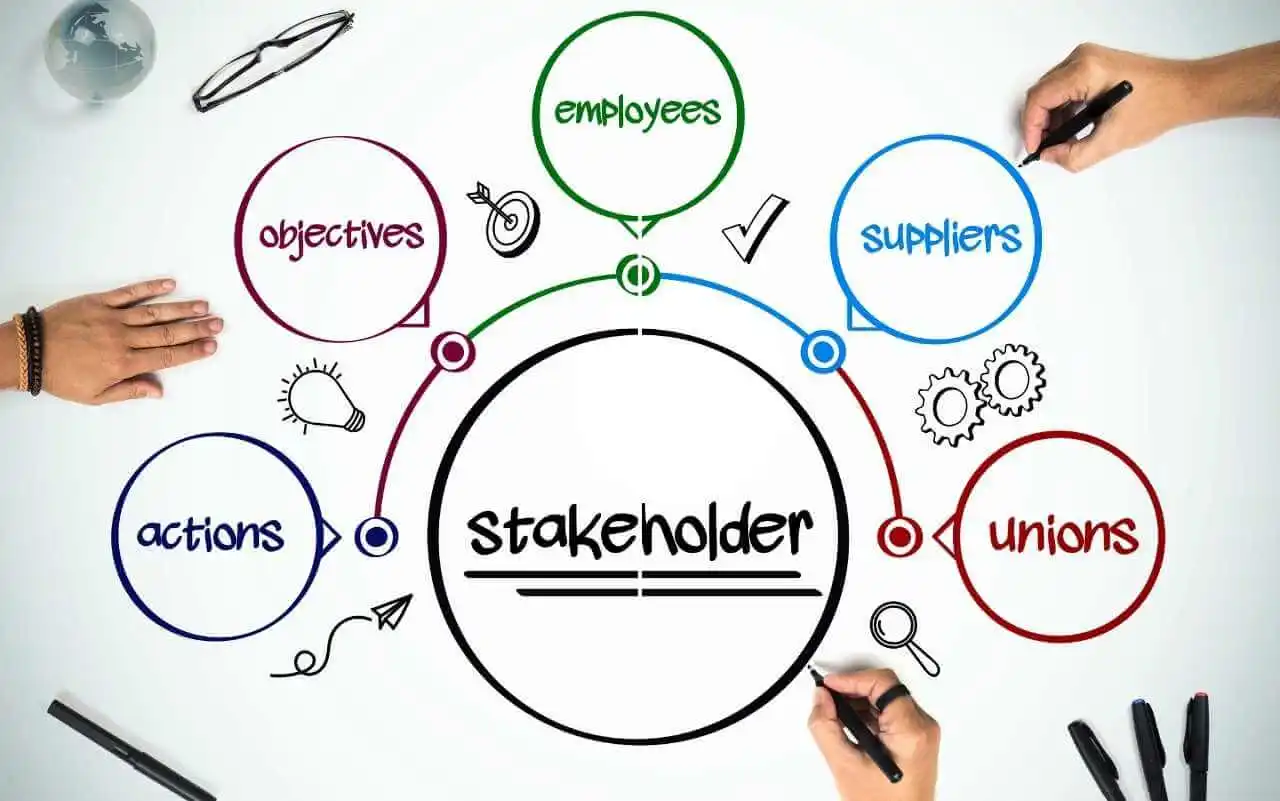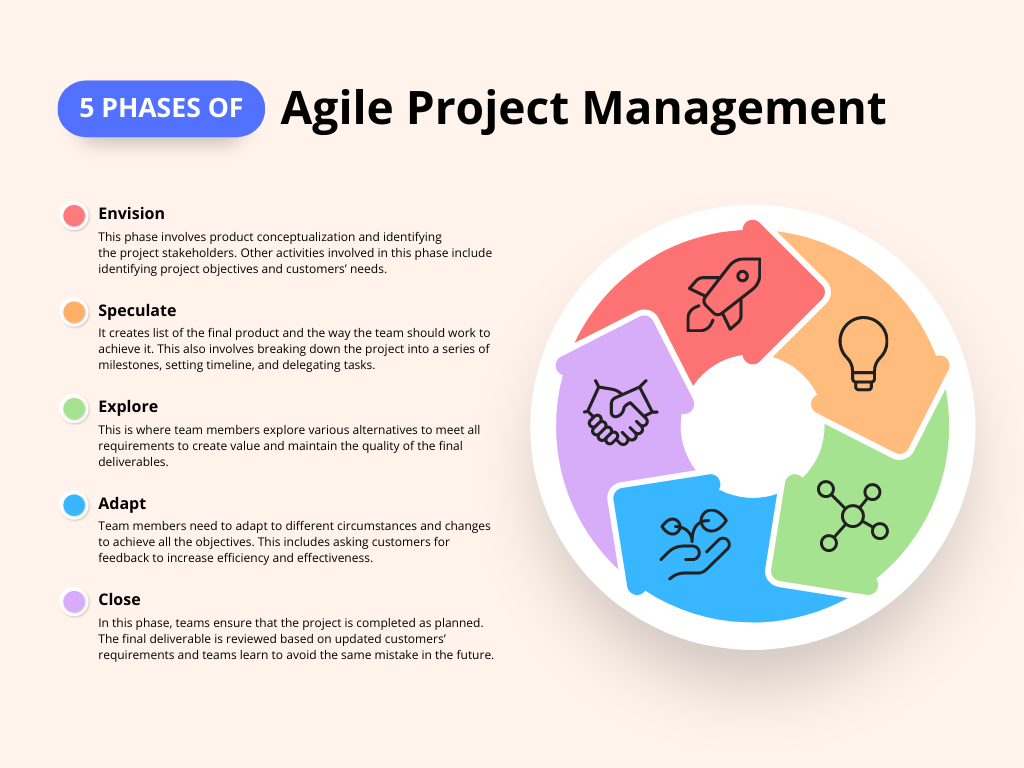Introduction to Agile Project Management
Agile Project Management is not just a buzzword; it’s a lifeline in today’s fast-paced world. Picture this: instead of following a strict plan that feels like marching in a straight line, Agile encourages teams to adapt, respond to changes quickly, and focus on delivering value. It’s like being prepared to change directions fast in a game. At its heart, Agile is about breaking big goals into smaller, manageable tasks and constantly checking in to ensure you’re on the right path. Teams work in short sprints or phases, and at the end of each, they look back to see what they’ve done right and what needs adjusting. This method ensures that what you’re working on always aligns with what’s needed, allowing immediate improvements without waiting until the end to find mistakes. So, whether you’re developing software, organizing events, or rolling out new products, Agile Project Management helps teams stay flexible, reduce risks, and ultimately deliver better results faster. It’s about being quick, efficient, and ready for whatever comes your way.
The Core Principles of Agile Methodology
Agile methodology is all about flexibility, speed, and collaboration. It breaks down the traditional walls of extensive planning before acting, opting for a process where change is not just expected but planned for. There are four core principles guiding Agile, and understanding these is key to understanding why Agile works so well in today’s fast-paced projects. First, individuals and interactions over processes and tools. This principle prioritizes teamwork and communication over strict adherence to tools and processes. It’s the people who deliver results, not the systems they use. Second, working software over comprehensive documentation. Here, the focus is on delivering functional bits of the project frequently rather than waiting to compile massive amounts of documentation before anything can be deemed complete. Third, customer collaboration over contract negotiation. Agile encourages continuous feedback and adjustment based on the customer’s needs, not just sticking to what was initially agreed upon. It’s about adapting to provide the best possible outcome. Lastly, responding to change over following a plan. While planning is not thrown out the window, Agile recognizes that changes can and will happen. Being responsive to these changes, rather than rigidly adhering to an original plan, is vital. Each of these principles supports the idea that staying agile means staying flexible, efficient, and, most importantly, effective in the face of change.
Agile vs. Traditional Project Management: Understanding the Differences
Agile and Traditional Project Management sit at two ends of the spectrum. Traditional, or Waterfall, project management is all about a linear approach. You plan everything upfront. Once you start, changes are hard and costly to implement. It’s like setting out on a road trip with one route in mind and no turning back, even if you encounter roadblocks. Meanwhile, Agile project management embraces change. It’s more like a series of short hikes where you can adjust your path with every step based on the latest terrain and weather forecast. In Agile, work is split into small chunks called sprints, usually lasting 2-4 weeks. At the end of each sprint, the team reviews the work and adjusts the plan as needed. This flexibility makes Agile ideal for projects in dynamic environments where requirements and goals often shift. So, if you’re facing a project where change is the only constant, going Agile might be your best bet.
Key Benefits of Implementing Agile in Project Management
Shifting to Agile project management offers many perks that can significantly improve your team’s performance and project outcomes. First off, Agile emphasizes flexibility and adaptability. Instead of sticking to a rigid plan, Agile teams can adjust to changes swiftly, which is crucial in today’s fast-paced world. You’re always aligned with the latest market trends and customer needs.
Another big win with Agile is improved communication. Teams work in short sprint cycles, which encourage regular feedback and discussions. This not only keeps everyone in the loop but also allows for quick adjustments.
Higher product quality adapts and improves constantly. The standout benefit is higher product quality
Lastly, increased team morale is a common result. Team members have more ownership over their work, can see their impact more clearly, and can adjust their workflow to be more effective. This boosts confidence and satisfaction in their roles.
Implementing Agile can make your projects more flexible, enhance communication, boost product quality, and even make your team happier.
Strategies for Staying Flexible in a Changing Environment
In the world of Agile Project Management, staying flexible is the game’s name, especially when everything around you keeps changing. Here’s how you can stay on top of things without breaking a sweat. First off, embrace change like a friend. Don’t see it as a hurdle but as an opportunity to grow and learn. Keep your team in the loop and foster an environment where adapting to new situations is part of the routine.
Next, prioritize. Not everything needs your immediate attention. Learn to identify what’s urgent and important, and tackle those tasks first. This way, you can manage your workload without feeling overwhelmed.
Feedback is your best friend. Regular check-ins with your team can help you catch issues early and adjust your sails accordingly. Encourage open communication and make sure everyone’s on the same page.
Lastly, keep learning. The Agile world is constantly evolving, and staying informed about the latest tools, techniques, and strategies can give you an edge. Be proactive about your professional development, and don’t be afraid to experiment with new approaches.
Remember, staying flexible isn’t about having all the answers; it’s about being ready to find them, no matter what comes your way.
Tools and Techniques for Effective Agile Project Management
In Agile project management, staying on top of changes and adapting quickly is key. Let’s dive straight into some essential tools and techniques that make managing such projects easier. First, consider agile software tools like Jira, Trello, or Asana. These platforms allow you and your team to track progress in real time, prioritize tasks, and adjust plans on the fly. They’re invaluable for keeping everyone on the same page. Next, let’s not forget the importance of daily stand-up meetings. These short, focused gatherings help the team share progress, tackle obstacles, and align on goals for the day. Now, onto a crucial technique: the sprint. Agile divides work into small, manageable chunks, known as sprints, usually lasting a few weeks. This approach ensures the team can adapt and refine the project based on feedback without waiting until the very end. Lastly, retrospectives are your best friend. After each sprint, hold a meeting to discuss what went well, what didn’t, and how processes can be improved. This continuous loop of feedback and adjustment is the heart of effective Agile project management. Remember, the goal isn’t just to do things right but to adapt and improve constantly.
Overcoming Common Challenges in Agile Projects
When you dive into Agile project management, expect to hit some roadblocks. But don’t sweat; it’s all part of the game. First off, resistance to change. People are creatures of habit, and throwing a new playbook at them doesn’t always get cheers. The key is to keep communication open and keep everyone on the same page about why Agile rocks. Then, there’s the issue of vague project scopes. Agile loves flexibility, but sometimes that means the goalposts keep moving. To tackle this, always have a clearly defined project goal, even if the path to get there shifts a bit. Now, don’t forget about overload. With sprints and constant changes, teams can burn out. Remember, sustainable pace over speed. Lastly, let’s talk about customer involvement. Too little, and you might head off-track. Too much, and you could get bogged down. Strike the right balance by setting clear collaboration guidelines. Overcoming these challenges is doable with patience, clear communication, and a solid grip on Agile principles. Stick with it, and watch your team adapt and thrive in the ever-changing project landscape.
Case Studies: Successful Agile Project Management Examples
Many companies have soared to new heights by adopting agile project management, proving its effectiveness in today’s fast-paced world. For instance, Spotify, a giant in the streaming industry, has famously used agile principles to foster innovation and adapt quickly to changes in the market. They divide their teams into “squads” focusing on specific features, allowing for rapid development and implementation. Another notable example is Netflix, which credits agility for its success in content delivery and personalized user experiences. By constantly testing and adapting their algorithms, Netflix stays ahead of trends and understands its audience better. Similarly, IBM, a titan in the tech industry, transformed its approach to product development by implementing agile methodologies. This shift accelerated their time to market and significantly improved client satisfaction and team collaboration. These case studies underline that agile isn’t just a methodology; it’s a mindset that, when embraced, can lead to remarkable success and innovation.
Tips for Leading an Agile Team Efficiently
Leading an agile team isn’t just about being flexible; it’s about steering the ship with a keen eye on the horizon while keeping your team rowing in sync. Here are some tried-and-tested tips to do just that. First, always prioritize communication. A team that talks effectively breaks down barriers to innovation. Use daily stand-ups to keep everyone on the same page. Next, empower your team. Give them the autonomy to make decisions within their scope. This builds trust and boosts morale. Also, keep your goals clear but your plans flexible. Agile is all about adapting, so set firm objectives but be ready to pivot strategies as needed. Remember, feedback is your best friend. Encourage it, act on it, and show its value. Finally, celebrate your wins, no matter how small. This keeps the team motivated and focused on the positives. Lead with these principles, and you’ll navigate the ever-changing tides of project management with agility and grace.
Conclusion: The Future of Project Management in an Agile World
The future of project management is undeniably agile. As the world speeds up and the unexpected becomes the norm, the traditional ways of running projects can’t keep up. Agile project management isn’t just a trend—it’s becoming the backbone of successful, adaptable companies. Why? Because it focuses on flexibility, team collaboration, and the ability to pivot quickly when needed. This doesn’t mean throwing plans out the window; it means building a framework that can withstand change. Teams that embrace agile are those that will thrive, making it not just a method but a necessity for staying competitive. As we move forward, the key for project managers is not to resist change but to become experts in managing it. Adopting an agile mindset isn’t just smart; it’s critical for survival and growth.








